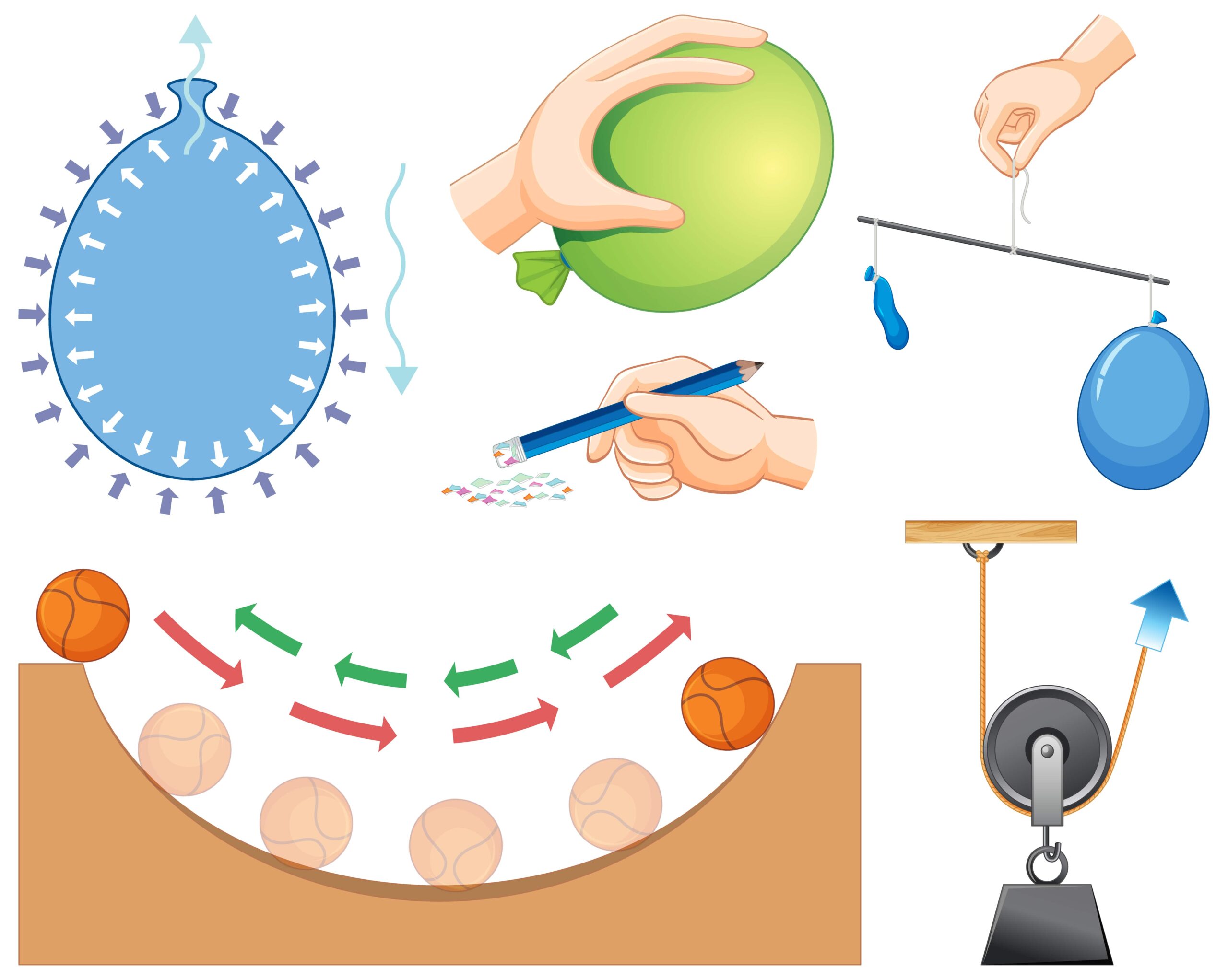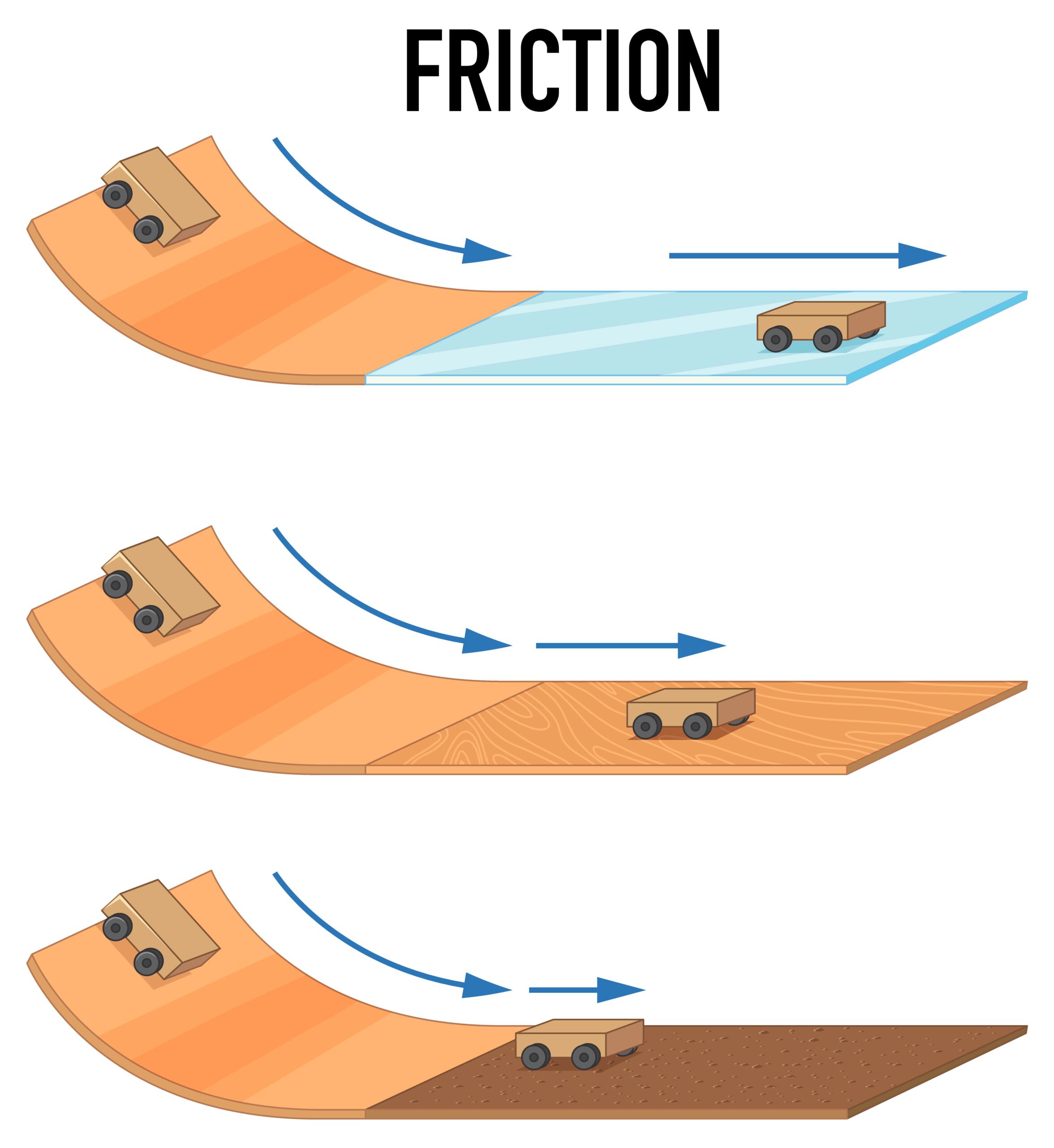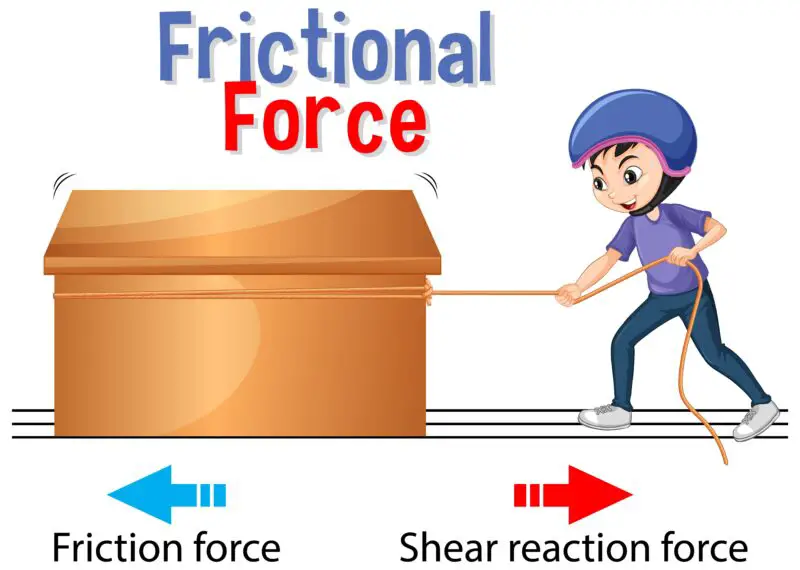Static friction is the force that resists the relative motion between two objects at rest, while kinetic friction is the force that opposes the motion of two objects sliding against each other.
What is friction?

(Image by brgfx on Freepik)
Friction is a force that opposes motion between two surfaces in contact. We encounter friction every day, whether it’s walking on the floor or using our hands to grip an object. The amount of friction depends on several factors such as the type of material, surface texture, and pressure applied.
When two surfaces are at rest relative to each other, static friction comes into play. Static friction keeps objects from moving until a certain threshold is reached by applying enough force to overcome this resistance. Once that threshold is surpassed, kinetic friction takes over and allows movement between the two surfaces.
The coefficient of friction is a measure of how much resistance there will be between two surfaces. A higher coefficient means more resistance while a lower one means less resistance.
Friction isn’t always bad though! It can also help us maintain stability and control over our movements. For example, when we walk or run our feet push against the ground creating just enough static and kinetic friction for us to move forward without slipping or falling.
Understanding what causes friction can help us better understand how objects behave in different situations where either static or kinetic forces come into play.
Static friction
Static friction is the force that resists the motion of an object when it’s at rest. It occurs between two objects in contact with each other, and one or both of them are not moving. Static friction is essential for allowing us to walk, drive cars, and even pick up objects without them slipping out of our hands.
The amount of static friction depends on several factors such as the nature of surfaces in contact, their roughness, and temperature. When we try to move an object initially at rest, we have to overcome this static friction by applying a significant force that exceeds its maximum value before it starts sliding.
If we don’t apply enough force to overcome static friction completely, the object will remain stationary no matter how much more force we use. This characteristic makes static friction different from kinetic or dynamic friction where there’s relative motion between objects involved.
Understanding about “Static Friction” can help us get a better picture while analyzing some real-life scenarios like why cars take longer distances to stop on icy roads compared to dry ones?
Kinetic friction

(Image by brgfx on Freepik)
Kinetic friction is the force that opposes motion between two surfaces that are in contact with each other. Unlike static friction, which keeps objects at rest, kinetic friction comes into play when an object is already in motion. When a moving object encounters resistance from another surface, it slows down and eventually stops.
The amount of kinetic friction depends on various factors such as the type of materials involved, their roughness and smoothness, and the force pushing them together. The coefficient of kinetic friction (μk) is used to measure this force and can vary greatly depending on these factors.
Examples of kinetic friction can be found all around us – from cars slowing down when they brake to shoes wearing out over time due to constant rubbing against pavement. It’s also important to note that without some level of kinetic friction, we wouldn’t be able to move or stop ourselves safely and efficiently.
Understanding how kinetic friction works is essential for numerous industries like transportation and manufacturing where reducing unnecessary forces can increase efficiency while saving energy costs.
Static friction Vs. Kinetic friction – Key differences
Static friction and kinetic friction are two types of friction that occur when objects come into contact with each other. Static friction is the force required to move an object from a stationary position, whereas kinetic friction occurs when objects are already in motion.
The key difference between static and kinetic friction lies in their behavior under different circumstances. In static friction, the applied force increases until it overcomes the limiting force of static resistance and causes movement. This means that static friction has a maximum limit beyond which the object will start moving.
On the other hand, kinetic or dynamic friction remains constant as long as there is relative motion between two surfaces. Unlike static friction, its value does not depend on how fast or slow an object moves.
Another significant difference between them is their direction – while static forces act against impending motion, i.e., opposite to the direction applied; dynamic forces always oppose actual motion occurring at any instant by acting parallel to it.
To understand these concepts better, let’s consider some examples: pushing a heavy box across a floor requires overcoming both types of frictions – initially handling its weight (static) then rolling it forward (kinetic). Similarly, sliding down a slope involves overcoming only one kind of frictions- kinetic due to continued movement but no initial resistance to overcome since gravity helps with momentum generation.
Understanding how these two types of frictions behave under different conditions can help us make decisions on how best we can approach problems involving them in real-life situations.
Examples of static friction
When it comes to static friction, there are a variety of examples that can help you understand this concept better. One common example is when you try to push a heavy object like a dresser across the floor. At first, the dresser may not budge at all due to static friction.
Another example of static friction is when you’re driving on an icy road and your tires have trouble gaining traction. The ice creates a high level of static friction which makes it difficult for your car’s wheels to move forward.
In addition, consider trying to slide a book across a table without lifting it up. The initial resistance that you feel is due to static friction between the book and the table’s surface.
Static friction also plays an important role in athletic movements such as running or jumping where athletes rely on their feet gripping the ground using static friction for optimal performance.
Understanding these various examples of static friction can help us appreciate its importance and how we interact with everyday objects around us.
Examples of Kinetic friction
When it comes to kinetic friction, there are numerous examples that we encounter in our daily lives. One of the most common examples is when a car’s brake pads rub against the wheels to slow down or stop the vehicle.
Another example of kinetic friction can be seen when you push a box across the floor. As you apply force, there is resistance between the box and the floor which slows its movement. Similarly, walking on a slippery surface like ice creates less friction than walking on dry ground.
Even something as simple as writing with a pen involves kinetic friction. The ink from the pen interacts with paper and creates resistance that allows us to write smoothly without sliding off.
Moreover, machines like conveyor belts rely heavily on kinetic friction to move objects from one place to another quickly and efficiently.
All these everyday examples illustrate how important understanding kinetic friction is for engineers, scientists and anyone interested in physics. By knowing about it helps them design better products that take into account this natural phenomenon we experience every day.
What are the differences between the types of friction?
There are two types of friction – static and kinetic. The main difference between the two is that static friction occurs when an object is at rest, while kinetic friction comes into play when the object is in motion.
Static friction requires a greater amount of force to overcome than kinetic friction. This means that it takes more effort to get an object moving from a stationary position than it does to keep it moving once it’s already in motion.
Another significant difference between these types of friction lies in their coefficients. Static friction has a higher coefficient than kinetic because there is more resistance needed to start movement compared to maintaining movement.
Moreover, static and kinetic frictions have different effects on objects during movement. Static friction causes objects to remain fixed in place until sufficient force is applied, whereas kinetic friction slows down or stops the momentum of an object over time.
In terms of examples, think about trying to push a heavy box across the floor initially (static) versus pushing it after it’s already moving (kinetic). You’ll notice that you need much more energy and strength for the former scenario due to static’s higher coefficient.
Understanding these differences can help us better understand how objects react under various circumstances where forces act upon them.
Featured Image By brgfx on Freepik








